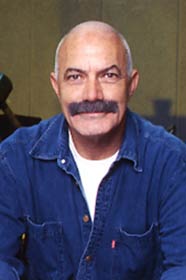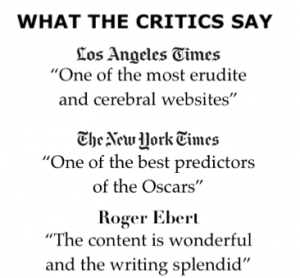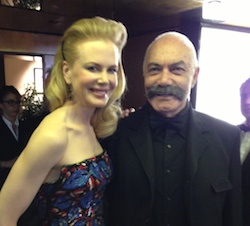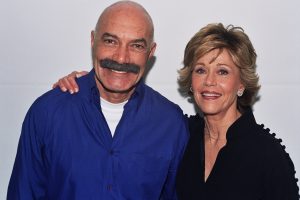Hitchcock’s “Blackmail,” made in 1929, is considered to be the first significant sound feature made by the British film industry.
The film was a critical and commercial hit. Among its awards is a citation as the best British movie of 1929.
When production began, “Blackmail” meant to be silent, but during the process, the new technology offered Hitchcock exciting opportunities, especially for the kinds of films he was interested in.
A completed silent version of Blackmail was released in 1929 shortly after the talkie version hit theaters. The silent version of Blackmail actually ran longer in theaters and proved more popular, largely because most theaters in Britain were not yet equipped for sound.
All the scenes with Alice White (Czech actress Anna Ondra) had to be reshot because of her heavy accent. English actress Joan Barry spoke Ondra’s lines, while Ondra pantomimed the words. As post-dubbing was impossible, it called for repetition of the scenes for sound dialogue.
The film’s story is deceptively simple: Young Alice White and her beau detective Frank Webber (John Longden) quarrel at a restaurant, and Alice departs with a handsome stranger (Cyril Ritchard).
The stranger, who turns out to be an artist, invites Alice to his studio. He persuades her to put on a circus costume so that he can sketch her, but then he attempts to make violent love to her. In response, she stabs him to death with a knife.
Assigned to the case, Webber begins to suspect that the girl is involved but he conceals his suspicion from his superiors.
The blackmail occurs, when a man claims to have seen Alice entering the artist’s quarters
The detective, trying to shift blame for the killing to the blackmailer, leads to the man’s flight. A chase ensues, ending with the death of the blackmailer, who falls through the dome of the British Museum (a site Hitchcock would return to in a future film). The girl decides to clear her conscience, but she is prevented from doing so by the detective
Nonetheless, the conclusion is ambiguous and bittersweet. at best. The future of the couple, who now share a secret guilt, is full of doubts. Visually, the expression on Alice’s face shows bewilderment and anguish.
Several of Hitchcock motifs and trademarks are evident in the movie, including a likable heroine, who’s a beautiful blonde, and is in peril.
And the presence of a famous landmark (a national monument, statue) in the climactic finale (see “Foreign Correspondent,” “North by Northwest”).

hematically, the movie deals with the inevitable disparity between Physical (and first) appearance and reality–the notion that sheer looks should not be confused with factual life, and the constant reversal of normative expectations.
The figures who are meat to represent law and order are themselves corruptible. In Blackmail, as in future films, the apparent righteousness of the police is completely undermined
The movie also examines the dilemma of the possibility of love versus the notion duty, which is manifest in three movements. After the opening close-up of the spinning wheel of a police van, we see the police arresting a man who is then fingerprinted and thrown into jail. The prints dissolve over his face, an indication of how the police regard a man’s identity
During the arrest, the detective acts as if following procedures were the most routine event. He washes his hands afterwards, and remarks casually to a colleague that he has a date.
The second movement shifts the focus from the theme of duty to the theme of love. It describes the evolution of the detective’s relationship with Alice Whit, including a quarrel in the restaurant
Alice doesn’t want to go to the movies, claiming that she has seen “everything worth seeing” (A good, inside joke by Hitchcock about the nature of most movies as disposable mass entertainment). However, Frank insists on viewing the film, titled “Fingerprints,” which, not surprisingly, is a tale about police work.
After the argument, Frank leaves. Alice then accepts an offer from an handsome stranger, who seduces her with the question, “have you ever seen an artist’s studio?”
Alice, like other Hitchcock heroines, is ambiguous toward sex: She both desires and rejects it. Even so, they go to his place, climbing five flights, and the ever-meticulous Hitchcock utilizes objective side-view crane, which follows them as they go up the levels. It’s a dizzy height to which the couple ultimately ascends.
Tension in the film is continuously present. Once the couple is inside the studio-bedroom, suspense builds up steadily. The shadows that fall across the artist’s face suggest mustaches, fingerprints and skulls
While the sexual innuendo is strong, the artist does not force himself upon the girl until she has changed costumes. He plays the piano and together they sketch a crude drawing of herself at his easel.
Hitchcock’s cameo,
Hitchcock’s cameo, a signature staple in his films, shows him here as he is being bothered by a young boy (Jacque Carter) as he reads a book on the Underground. This is the lengthiest of Hitchcock’s cameo appearances, lastinf about 10 minute long; most other cameos run for a second or two
Two actors who would become future directors worked on the production of Blackmail: Ronald Neame operated the clapperboard, and Michael Powell (“The Red Shoes”) took still photographs.
Cast
Anna Ondra as Alice White
Sara Allgood as Mrs. White
Charles Paton as Mr. White
John Longden as Detective Frank Webber
Donald Calthrop as Tracy
Cyril Ritchard as Mr. Crewe, an artist
Hannah Jones as the landlady
Harvey Braban as the Chief Inspector (sound version)
Jacque Carter as boy
Joan Barry as Alice White (voice)
Johnny Butt as Sergeant
Phyllis Konstam as gossiping neighbour
Sam Livesey as the Chief Inspector (silent version)
Phyllis Monkman as gossip woman
Percy Parsons as crook










